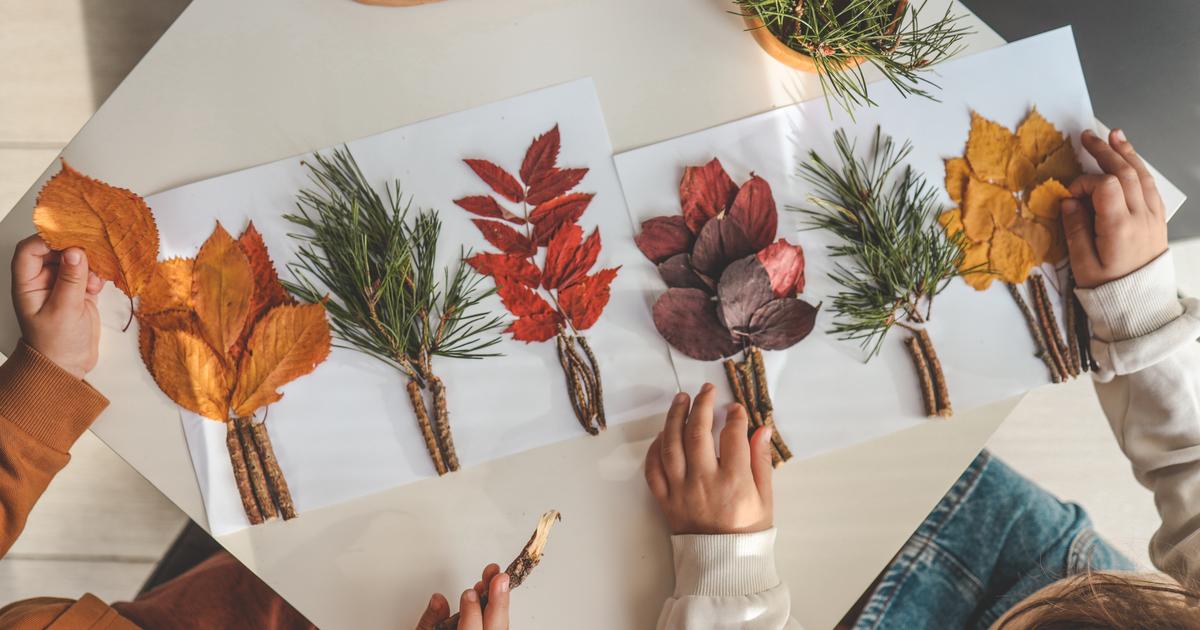How to immortalize a beautiful walk through a flowery meadow?
Keep a flower that has a funny shape, unearthed on a path?
Create memories with flowers given by a child?
A herbarium may be the right solution.
It is also a pleasant activity to do, alone or with family.
To discover
What to plant, sow or harvest in March?
What is a herbarium?
A herbarium is a collection of dried plants.
Flattened, they are generally kept between two sheets of paper.
Used by botanists, herbaria also delight families.
They allow children to become familiar with flowers and other plants.
How to make your own herbarium?
The necessary equipment :
To prepare for drying:
The selected plants
Absorbent paper (blotting paper, paper towel, etc.)
Sheets of cardboard
A press or books of a certain weight
A cutting tool (pair of scissors, pruning shears or knife)
For the creation of the herbarium
A notebook with thick sheets or perforated cardboard sheets (in A4 or A3 format depending on the size of the species) and a binder (and possibly transparent perforated pockets)
Gummed paper cut into thin strips
A pliers
A small sponge
Self-adhesive labels
Markers or pencils of several colors
Collect the plants
Cut the plant cleanly.
Before drying, place it in a dry place, such as a cardboard box or in a cardboard folder.
For the plants to dry faster, choose sunny picking days.
If the plants are too humid, the time spent drying will be extended.
Especially since it is possible that this humidity could lead to rotting of part or all of the plant.
In addition, cleaning the soil will be more difficult if the plant is damp.
Attention !
Do not pick flowers that are preserved or protected, to respect the balance of biodiversity.
Dry plants effectively
Alongside your plants, you can mention in your herbarium the common and scientific name of the plant, the name of the person who picked it, the date of harvest, the place of origin... shaiith / stock.adobe. com
1/ Place a slightly rigid support (cardboard, dense sheet of paper) on your work surface, then place absorbent paper on top (blotting paper, paper towel, toilet paper).
Advice
Do not opt for newspaper, the ink could stain your flowers.
2/ Place your plants on this layer, carefully spreading out the roots, leaves and petals.
Be careful not to overlap several plants, you will no longer be able to separate them from each other once they have dried.
If your plant is too large, you will need to consider cutting it or keeping only part of it.
3/ Place a layer of absorbent paper on top and finally another sheet of cardboard.
4/ Place on top a heavy object of similar size or larger than the sheet: a dictionary, an encyclopedia, a heavy board, etc.
5/ Repeat this operation every two or three days, until all the plants are dry.
To speed up drying time, regularly change the sheets of paper towels surrounding the plants.
A plant is dry when it is rigid.
Complete drying time may require a month of patience.
Presentation and labeling
It's time to place your dried plants in a herbarium.
Drawing sheets placed in a binder, dedicated notebook, drawing notebook: it's up to you to choose the medium.
Choose the order in which you want to arrange your plants and prepare the instructions with all the information you want (common and scientific name of the plant, name of the person who picked it, date of harvest, place of origin. ..) You can write them directly on paper or on labels.
With pliers, place the flowers.
To maintain them, several options are available to you:
small strips of gummed paper, which you will have moistened using a small sponge
rectangles of adhesive paper which will completely cover the plant
printed adhesive tape, used for scrapbooking
Advice
Adhesive tape, although it is more practical, should be avoided because over time, it tends to yellow over time.
Even if the flowers are dry and stuck to the leaves, they remain fragile contents.
The herbarium should therefore be handled with care and placed in a dry place, protected from light.
You can also add a summary or an index at the beginning or end of the notebook to find the plant that interests you more quickly.
You can also add additional information such as the origin and the family to which the plant belongs, etc.
A suitable environment
Once the elements are assembled into a block, the herbarium finds its place in a sheltered and dry place.

